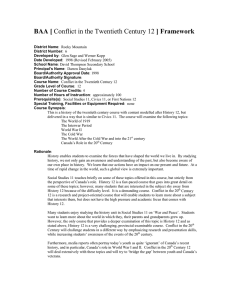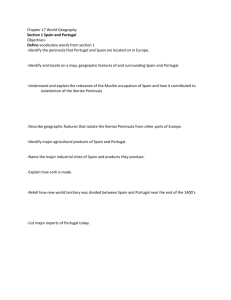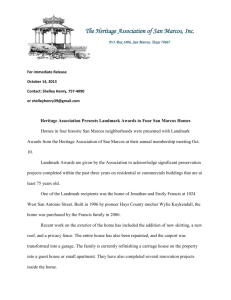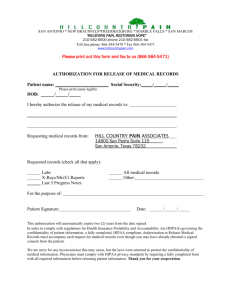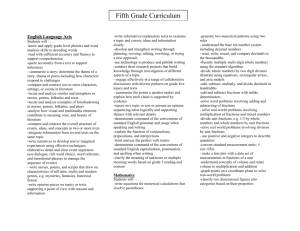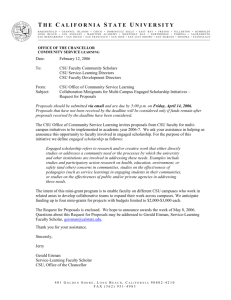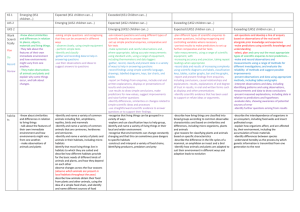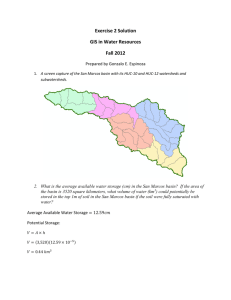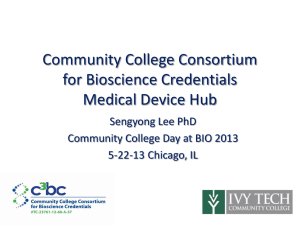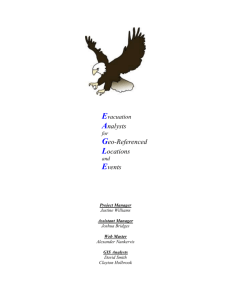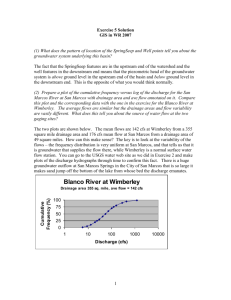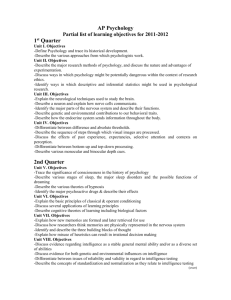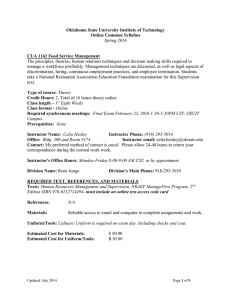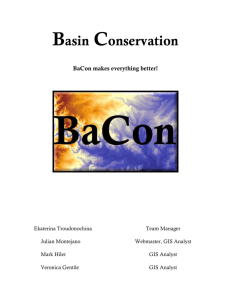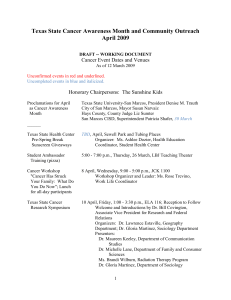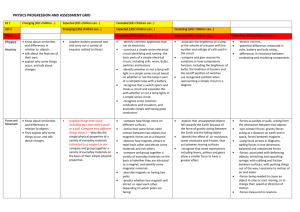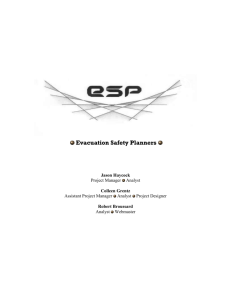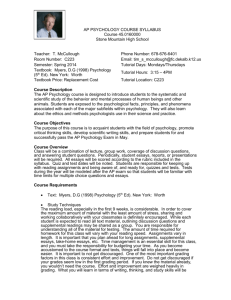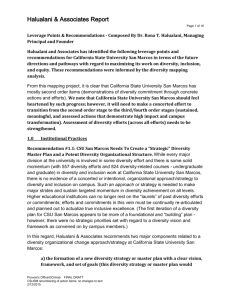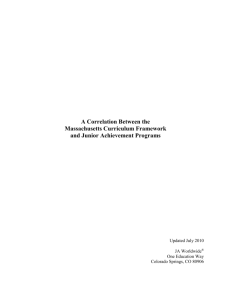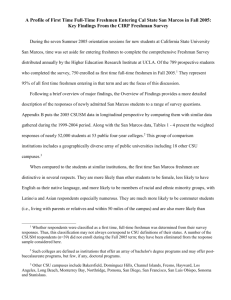Guide to develop Learning Outcomes
advertisement
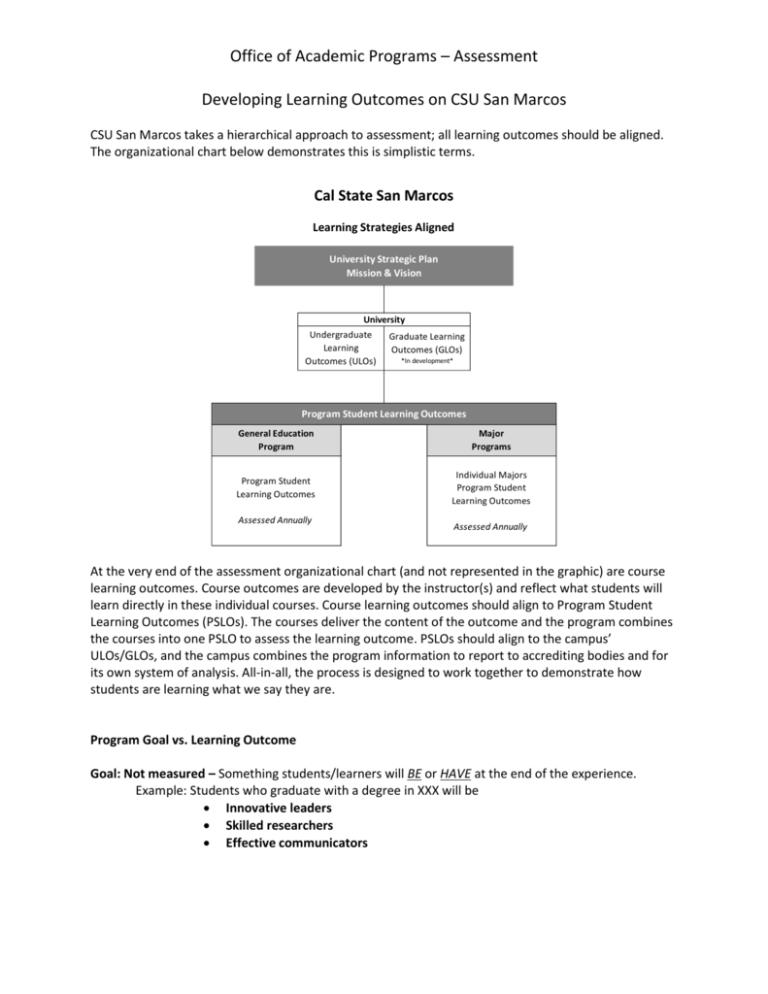
Office of Academic Programs – Assessment Developing Learning Outcomes on CSU San Marcos CSU San Marcos takes a hierarchical approach to assessment; all learning outcomes should be aligned. The organizational chart below demonstrates this is simplistic terms. Cal State San Marcos Learning Strategies Aligned s University Strategic Plan Mission & Vision University Undergraduate Learning Outcomes (ULOs) Graduate Learning Outcomes (GLOs) *In development* Program Student Learning Outcomes General Education Program Major Programs Program Student Learning Outcomes Individual Majors Program Student Learning Outcomes Assessed Annually Assessed Annually At the very end of the assessment organizational chart (and not represented in the graphic) are course learning outcomes. Course outcomes are developed by the instructor(s) and reflect what students will learn directly in these individual courses. Course learning outcomes should align to Program Student Learning Outcomes (PSLOs). The courses deliver the content of the outcome and the program combines the courses into one PSLO to assess the learning outcome. PSLOs should align to the campus’ ULOs/GLOs, and the campus combines the program information to report to accrediting bodies and for its own system of analysis. All-in-all, the process is designed to work together to demonstrate how students are learning what we say they are. Program Goal vs. Learning Outcome Goal: Not measured – Something students/learners will BE or HAVE at the end of the experience. Example: Students who graduate with a degree in XXX will be Innovative leaders Skilled researchers Effective communicators Office of Academic Programs – Assessment Developing Learning Outcomes on CSU San Marcos Learning Outcome: Measured – Something students/learners will be able to DO or MAKE once they’ve completed a course of study. Example: Student who graduate with a degree in XXX will be able to Develop a leadership plan Develop and test a hypothesis Develop Learning outcomes have three major characteristics: 1. They specify an action by the students/learners that is observable 2. They specify an action by the students/learners that is measurable 3. They specify an action that is done by the students/learners (rather than the faculty members) Effectively developed expected learning outcome statements should possess all three of these characteristics. When this is done, the expected learning outcomes for a course are designed so that they can be assessed (Suskie, 2004). WRITING EFFECTIVE LEARNING OUTCOME STATEMENTS When stating expected learning outcomes, it is important to use verbs that describe exactly what the learner(s) will be able to do upon completion of the course. Examples of good action words to include in expected learning outcome statements: Compile, identify, create, plan, revise, analyze, design, select, utilize, apply, demonstrate, prepare, use, compute, discuss, explain, predict, assess, compare, rate, critique, outline, or evaluate (Safe to stick with Bloom’s Taxonomy or Revised Bloom’s Taxonomy.) There are some verbs that are unclear in the context of an expected learning outcome statement (e.g., know, be aware of, appreciate, learn, understand, comprehend, become familiar with). These words are often vague, have multiple interpretations, or are simply difficult to observe or measure (American Association of Law Libraries, 2005). As such, it is best to avoid using these terms when creating expected learning outcome statements. For example, please look at the following learning outcomes statements: The students will understand basic human development theory. The students will appreciate music from other cultures. Both of these learning outcomes are stated in a manner that will make them difficult to assess. Office of Academic Programs – Assessment Developing Learning Outcomes on CSU San Marcos Consider the following: How do you observe someone “understanding” a theory or “appreciating” other cultures? How easy will it be to measure “understanding” or “appreciation”? These expected learning outcomes are more effectively stated the following way: The students will be able to identify and describe the major theories of human development. The students will be able to identify the characteristics of music from other cultures. TIPS FOR DEVELOPING COURSE-LEVEL EXPECTED LEARNING OUTCOMES STATEMENTS Limit the course-level expected learning outcomes to about five statements for the entire course (more detailed outcomes can be developed for individual units, assignments, chapters, etc.). Focus on overarching or general knowledge and/or skills (rather than small or trivial details). Focus on knowledge and skills that are central to the course topic and/or discipline. Create statements that are student-centered rather than faculty-centered (e.g., “upon completion of this course students will be able to list the names of the 50 states” versus “one objective of this course is to teach the names of the 50 states”). Focus on the learning that results from the course rather than describing activities or lessons in the course. Incorporate or reflect the institutional and departmental missions. Incorporate various ways for students to show success (outlining, describing, modeling, depicting, etc.) rather than using a single statement such as “at the end of the course, students will know _______“ as the stem for each expected outcome statement. Office of Academic Programs – Assessment Developing Learning Outcomes on CSU San Marcos SAMPLE EXPECTED LEARNING OUTCOMES STATEMENTS The following are sample expected learning outcome statements from selected courses. United States History Upon completion of this course, the students will be able to: -Describe the relationship between the past and the present -Write an essay defining a pluralistic society and its relationship to our democratic principles -Outline the structure of the Constitution of the U.S. -Identify and define the social, political, and economic institutions that impact the modern society -Describe the major events and individuals associated with the history of the United States. Introduction to Business At the end of the course, students should be able to: -Identify and describe current domestic and international business trends -Explain how proper business management benefits consumers and employees -Define the basic rules related to human resources management -Compare and contrast the different types of business ownership -Evaluate and classify various marketing strategies -Summarize how technology can help a business manage information Music Appreciation/History Course (with a focus on Western music) After completing this course, students will be able to: -Identify the basic elements of Western music -List the instruments associated with Western music -Describe the distinct style periods of Western music -Recognize selected examples of Western music aurally -Discriminate among different Western music styles -Explain music’s place in relation to other art forms General Psychology Students who complete this course should be able to: -Identify and define basic terms and concepts which are needed for advanced courses in psychology -Outline the scientific method as it is used by psychologists -Apply the principles of psychology to practical problems -Compare and contrast the multiple determinants of behavior (environmental, biological, and genetic) -Analyze current research findings in the areas of physiological psychology, perception, learning, abnormal, and social psychology -Distinguish between healthy and unhealthy physical, mental, and emotional patterns Plant and Soil Sciences At the end of the course, the student should be able to: -Label the parts of a plant -Define the terms used in plant growth and reproduction -Explain transpiration, respiration and photosynthesis Office of Academic Programs – Assessment Developing Learning Outcomes on CSU San Marcos -Calculate the germination rates of various seeds -Identify soil texture and structure from soil samples -List the primary, secondary and micro nutrients present in soil -Identify and describe land capability classes and their uses General Nutrition Upon completion of this course students will be able to: -Describe the digestive system -Explain the steps involved in metabolism and the ways energy is derived from carbohydrate, fat, and protein -Design individualized eating plans utilizing diet planning principles and the Food Guide Pyramid -State the benefits associated with physical activity and the components of a sound fitness or health program -Describe how nutrition and lifestyle choices impact the life cycle METHODS FOR ASSESSING LEARNING OUTCOMES Formal Evaluation/Assessment Activities Exams Homework Assignments Quizzes In-Class Activities Papers Class Discussion Informal Assessment Activities Non-Graded Quizzes Active Learning Techniques “Muddiest Point” Activities Polling the class One Minute Papers Application Cards Reaction Papers Assessment Resources Angelo, T.A. & Cross, K.P. (1993). Classroom assessment techniques: A handbook for college teachers (2nd Ed.). San Francisco, CA: Jossey-Bass. Banta, T., Black, K., & Jones, E. (2009) Designing effective assessment: Principles and profiles of good practice. San Francisco, CA: Jossey-Bass. Suskie, L. (2004). Assessing student learning: A common sense guide. Bolton, MA: Anker Publishing.
